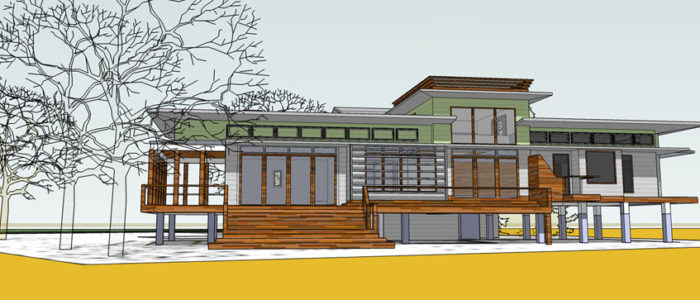Cutting Edge Home Performance Lessons in Architecture and Engineering
Last week, 19 teams of college students demonstrated their ability to design and build affordable homes that produced more energy than they consumed at the bi-annual Solar Decathlon, held for the first time in Irvine, California. About 4,000 students spent two years designing the homes and operating systems for the prestigious clean energy competition.

Exterior of the zero energy house designed and built by students from Team Austria of the Vienna Institute of Technology, winner of the Solar Decathlon 2013 in Irvine, Calif. at the Orange County Great Park. Credit: Jason Flakes/U.S. Department of Energy Solar Decathlon
The homes were designed using an iterative whole-house process to achieve fully integrated systems that maximize energy performance, comfort and indoor environmental quality. Over the coming months, the houses will travel across the country and the globe on educational tours to demonstrate best practices in design and construction of sustainable homes for diverse climate conditions from the desert southwest to Canadian north. Many of the houses from previous competitions are used for continued research and are on display for public tours at their respective universities.
The Solar Decathlon is an outstanding example of the Home Performance concept used by participating AlabamaWISE contractors for residential upgrades to existing homes. For the Solar Decathlon, student teams analyzed each energy related component with computer modeling to precisely match mechanical systems to the building enclosure and occupancy. A streamlined process of scientific building analysis and computer modeling is used by qualified home performance contractors when upgrading existing homes to generate an Energy Performance Score and a package of home performance improvements. To learn more about the Solar Decathlon and to see all 19 competing designs, visit www.solardecathlon.gov.

Interior of the Solar Decathlon house built by students from Team Ontario (Queen’s University, Carleton University and Algonquin College), winner of the engineering category during the Solar Decathlon 2013. Credit: Jason Flakes/U.S. Department of Energy Solar Decathlon
Solar Decathlon homes all share the most important home performance features offered by AlabamaWISE contractors using a whole-house strategy to balance the thermal enclosure, the external environment, the occupants and the mechanical systems to optimize energy use, indoor comfort and environmental quality. The good news is, it’s not rocket science and the key to success are contractors with a commitment to delivering the highest quality work because the main lesson of Solar Decathlon is success is in the details.
THERMAL ENCLOSURE
All of the Solar Decathlon teams start by designing a building enclosure to minimize heat loss during winter and minimize heat gain during summer while maintaining healthy and comfortable indoor environment all year-round, and is the easy part of the design.
The standard formula for a high performing home thermal enclosure requires both insulation and air barrier. Insulation is like a sweater for your home and the air-barrier functions like a wind breaker. Air whips through insulation without air barrier and nearly all existing homes do not have an effective air barrier.

Exterior of the Solar Decathlon house built by Team Ontario, winner of the engineering category during the Solar Decathlon 2013. Credit: Jason Flakes/U.S. Department of Energy Solar Decathlon
INSULATION
The Solar Decathlon homes typically have R-50 insulation at the ceiling and R-30 insulation in the walls and floor, about twice as much as new homes in Alabama (typically R-30 at the attic and R-15 in the walls).
WINDOWS
High quality windows are strategically used for natural lighting, but windows transfer about 10 times more heat than passes through the same are of wall. Design teams limit the size and orientation of windows and use shading to prevent greenhouse effects from summer sun while taking advantage of free solar heat from the winter sun.
AIR SEALING
Air leaks often waste more energy and cause more comfort issues than any other component of the average home. During the winter, warm air escapes and cold air enters through holes in the ceiling, walls, floor and duct system. Worse, conditioned air leakage during summer months is replaced by hot-humid air, causing comfort issues from both temperature and high humidity.
The typical new home allows all the conditioned air to escape every three hours. Homes built before 1980 may lose all the conditioned air once every hour or more, causing drafts that are especially noticeable on windy days.
Solar Decathlon homes are 10 times or more air-tight than new homes, around .03 air changes per hour. Humans need fresh air, so mechanical ventilation is required to remove stale indoor air when a home is air sealed tighter than .28 air changes per hour. By the way, dogs and cats need even more fresh air than humans.
MECHANICAL SYSTEMS
VENTILATION
All homes in the Solar Decathlon use Energy Recovery Ventilators to bring in fresh air while exchanging heat with the exhaust air to condition the fresh air.
LAUNDRY AND KITCHEN APPLIANCES
Home mechanical systems include kitchen appliances, laundry washer and dryer, hot water systems, ventilation


Comments are closed.